Drawing of Blood Running Through the Viens
Author : Cinnamon VanPutte, Jennier Regan, Andrew Russo Posted On :05.08.2017 11:56 pm
list the major veins that carry blood from each of the body areas, and describe their functions.
BLOOD VESSELS OF THE SYSTEMIC CIRCULATION: VEINS The oxygen-poor blood from the tissues of the body returns to the heart through veins. Thesuperior vena cava (vē′ nă kā′ vă) returns blood from the head, neck, thorax, and upper limbs to the right atri-um of the heart, and theinferior vena cava returns blood from the abdomen, pelvis, and lower limbs to the right atrium (figure 13.14). The two pairs of major veins that drain blood from the head and neck are theexternal andinternal jugular (j ŭ g′ ū -lar)veins (fig-ure 13.15). The external jugular veins are the more superficial of the two sets. They drain blood from the posterior head and neck, emptying primarily into the subclavian veins. The internal jugular veins are much larger and deeper. They drain blood from the brain and the anterior head, face, and neck. The internal jugular veins join thesubclavian veins on each side of the body to form thebrachiocephalic veins.The brachiocephalic veins join to formthe superior vena cava. The veins of the upper limbs (figure 13.16) can be divided into deep and superficial groups. The deep veins, which drain the deep structures of the upper limbs, follow the same course as the arteries and are named for their respective arteries. The only noteworthy deep veins are thebrachial veins, which accompany the brachial artery and empty into the axillary vein. The superficial veins drain the superficial structures of the upper limbs and then empty into the deep veins. Thecephalic (s ĕ ′ fal′ ik; toward the head)vein, which empties into theaxillary vein, and thebasilic (ba-sil′ ik)vein,which becomes the axillary vein, are the major superficialveins. Many of their tributaries in the forearm and hand can be seen through the skin. Themedian cubital (k ū ′ bi-tal)vein usually connects the cephalic vein or its tributaries with the basilic vein. Although this vein varies in size among people, it is usually quite prominent on the anterior surface of the upper limb at the level of the elbow, an area called thecubital fossa,and is often used as a site for drawing blood. Three major veins return blood from the thorax to the superior vena cava: theright andleft brachiocephalic veins and theazy-gos(az- ı̆ ′gos, az′i-gos) vein(figure 13.17). Blood drains from theanterior thoracic wall by way of theanterior intercostal veins. These veins empty into theinternal thoracic veins, which empty into the brachiocephalic veins. Blood from the posterior thoracic wall is collected byposterior intercostal veins that drain into the azygos vein on the right and thehemiazygos veinor theacces-sory hemiazygos veinon the left. The hemiazygos and accessoryhemiazygos veins empty into the azygos vein, which drains into the superior vena cava (see figure 13.15). Figure 13.18 provides an overview of the major veins of the abdo-men and pelvis. It may help to refer to this figure as you read the following discussion. Blood from the posterior abdominal wall drains throughascending lumbar veins into the azygos vein. Blood from the rest of the abdomen and from the pelvis and lower limbs returns to the heart through the inferior vena cava. The gonads (testes or ovaries), kidneys, adrenal glands, and liver are the only abdominal organs outside the pelvis from which blood drains directly into the inferior vena cava. Theinternal iliac veins drain the pelvis and join theexternal iliac veins from the lower limbs to form thecommon iliac veins. The common iliac veins combine to form the inferior vena cava (see figure 13.14). Blood from the capillaries within most of the abdominal viscera, such as the stomach, intestines, pancreas, and spleen, drains through a specialized system of blood vessels to the liver. The liver is a major processing center for substances absorbed by the intestinal tract. Aportal (p ō r ′ t ă l)system is a vascular system that begins and ends with capillary beds and has no pumping mechanism, such as the heart, in between. Thehepatic (he-pa ′ tik)portal system (figure 13.19) begins with capillariesin the viscera and ends with capillaries in the liver. The major tributaries of the hepatic portal system are thesplenic(splen ′ ik)veinand the superior mesenteric vein.The inferior mesenteric veinempties into the splenic vein. The splenic vein carries bloodfrom the spleen and pancreas. The superior and inferior mesen-teric veins carry blood from the intestines. The splenic vein and the superior mesenteric vein join to form thehepatic portalvein,which enters the liver. Blood from the liver flows intohepatic veins, which join the inferior vena cava. Blood entering the liver through the hepatic portal vein is rich in nutrients collected from the intestines, but it may also contain a number of toxic substances that are potentially harmful to body tissues. Within the liver, nutrients are taken up and stored or modified, so that they can be used by other cells of the body. Also within the liver, toxic substances are converted to nontoxic substances. These substances can be removed from the blood or carried by the blood to the kidneys for excretion. Other veins of the abdomen and pelvis include the renal veins, the suprarenal veins, and the gonadal veins. Therenal veins drain the kidneys, and the suprarenal veins drain the adrenal glands. The testicular veins drain the testes in males; the ovarian veins drain the ovaries in females. The veins of the lower limbs (figure 13.20), like those of the upper limbs, consist of deep and superficial groups. The deep veins fol-low the same path as the arteries and are named for the arteries they accompany. The superficial veins consist of the great and smallsaphenous (s ă -f ē ′ n ŭ s, sa′ f ĕ -n ŭ s)veins. Thegreat saphe-nous veinoriginates over the dorsal and medial side of the footand ascends along the medial side of the leg and thigh to empty into the femoral vein. Thesmall saphenous vein begins over the lateral side of the foot and joins thepopliteal vein, which becomes the femoral vein. The femoral vein empties into the external iliac vein. 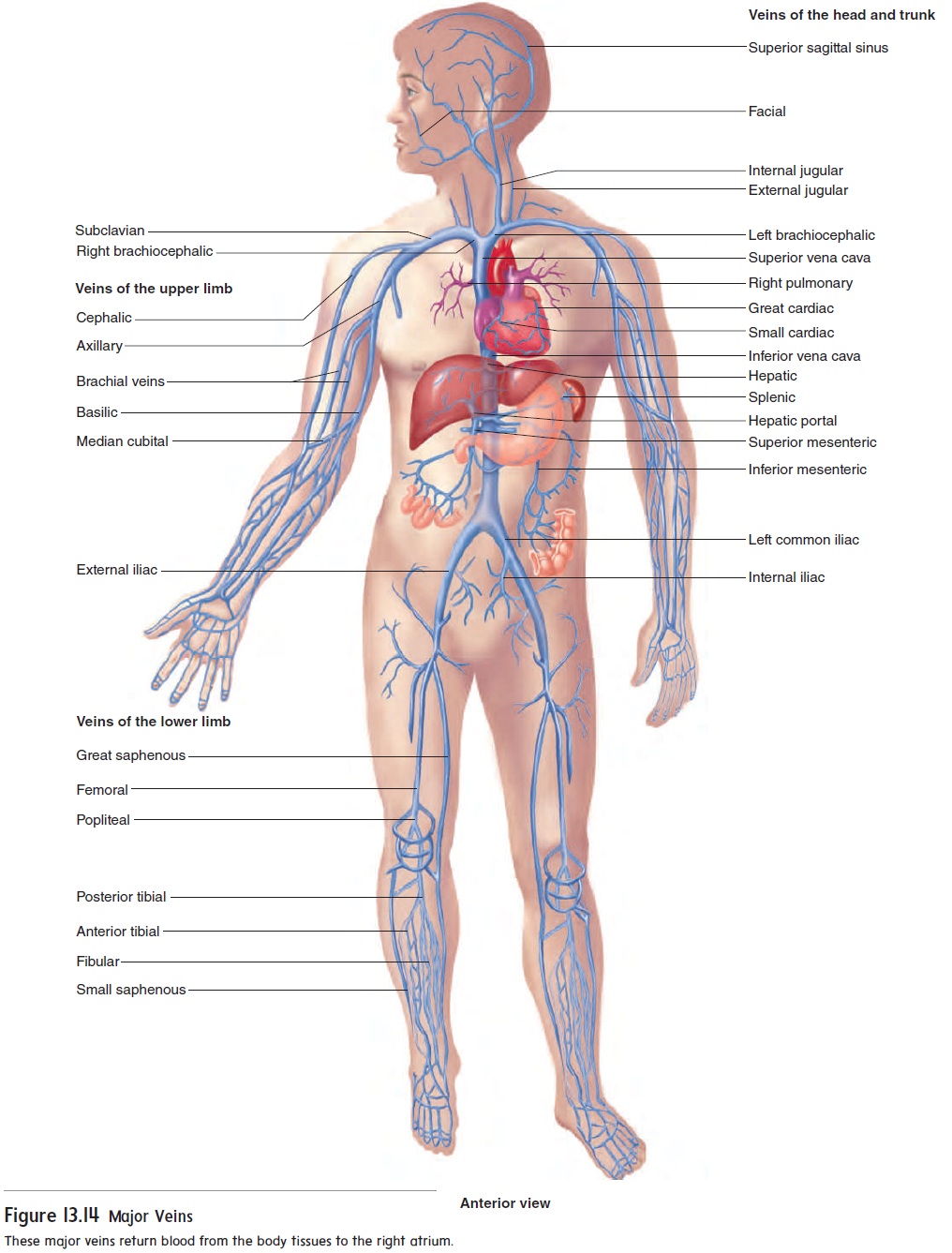
Veins of the head and neck
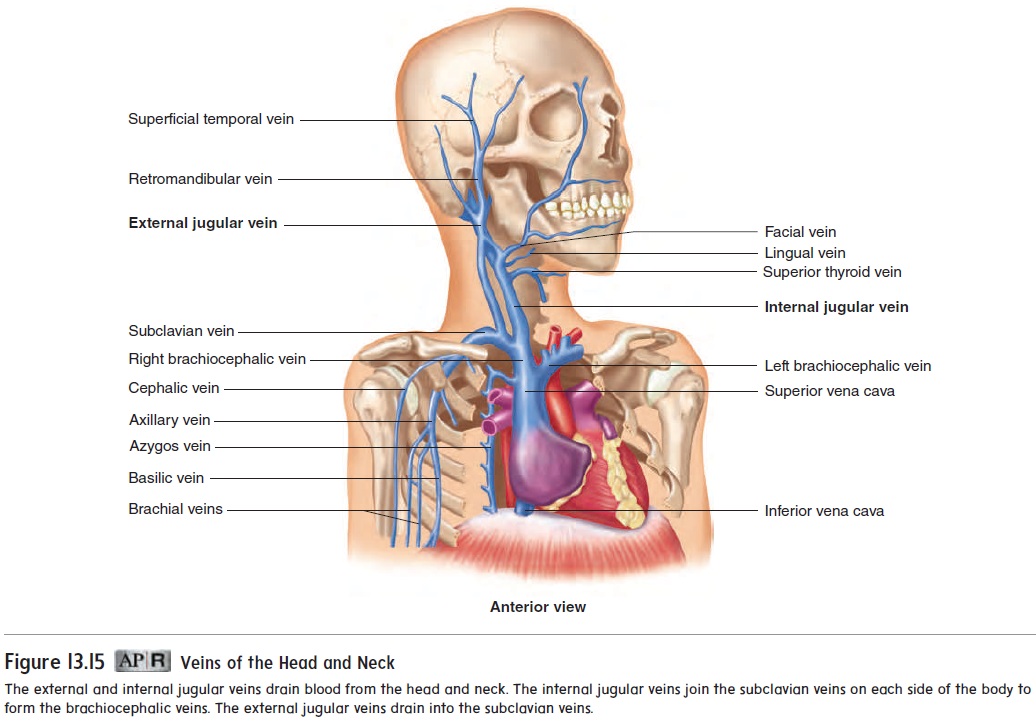
Veins of the upper limbs
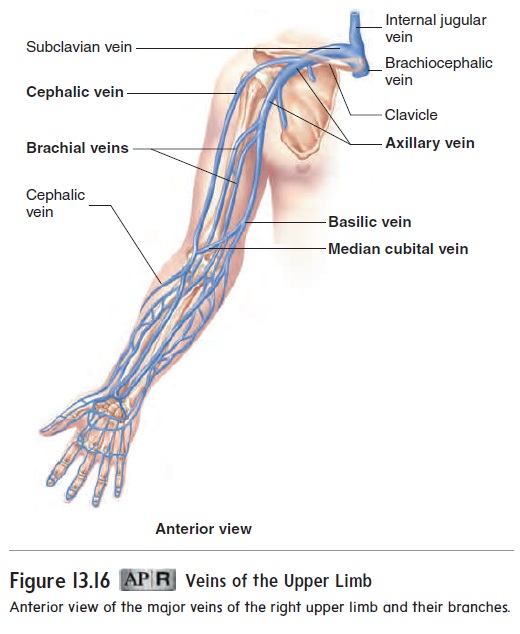
Veins of the thorax

Veins of the Abdomen and Pelvis

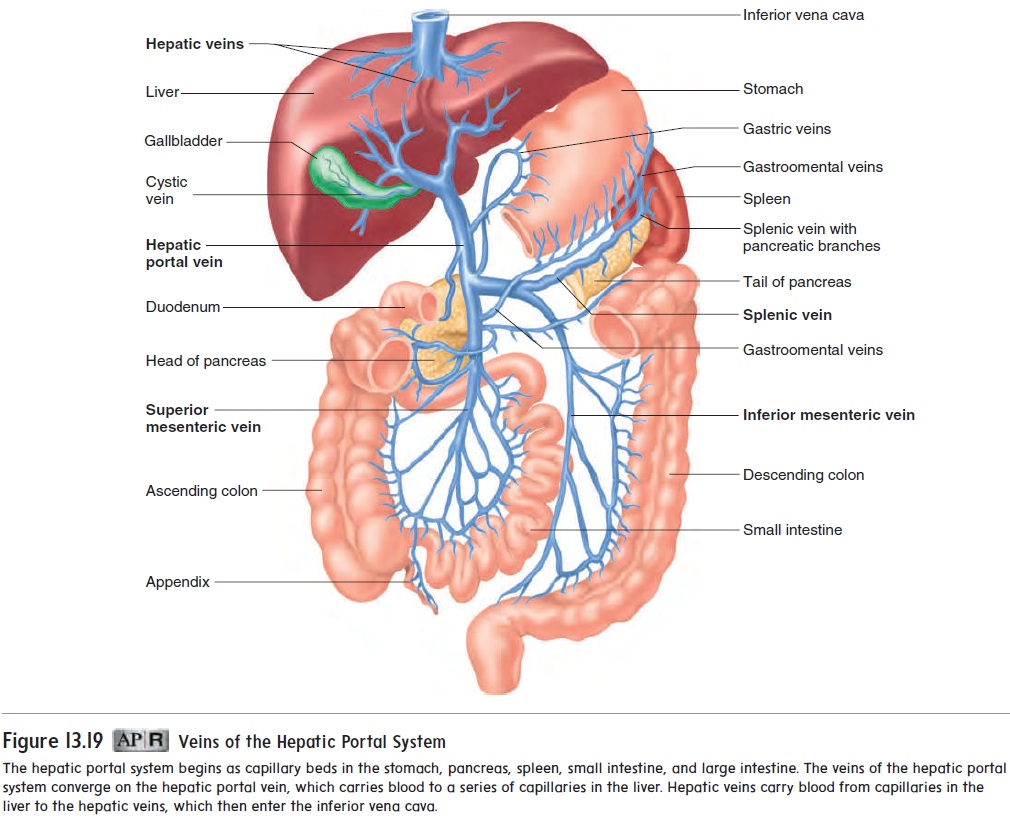
Veins of the lower limbs
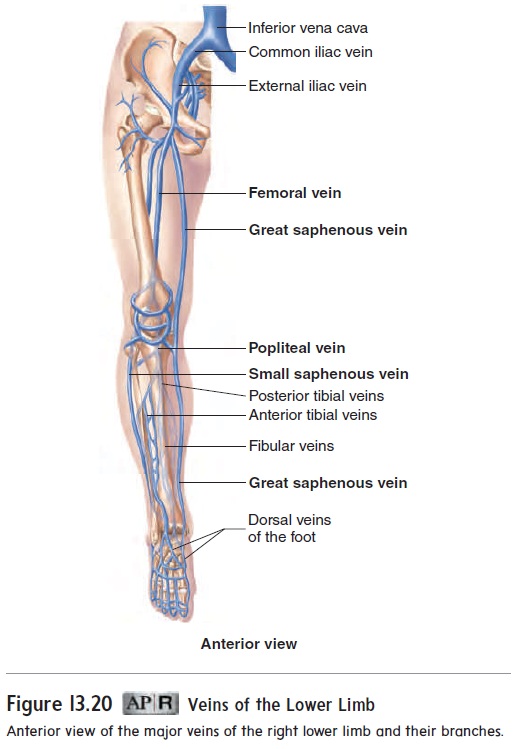
Study Material, Lecturing Notes, Assignment, Reference, Wiki description explanation, brief detail
Essentials of Anatomy and Physiology: Blood Vessels and Circulation : Blood Vessels of the Systemic Circulation: Veins |
Drawing of Blood Running Through the Viens
Source: https://brainkart.com/article/Blood-Vessels-of-the-Systemic-Circulation--Veins_21890/
0 Response to "Drawing of Blood Running Through the Viens"
Postar um comentário